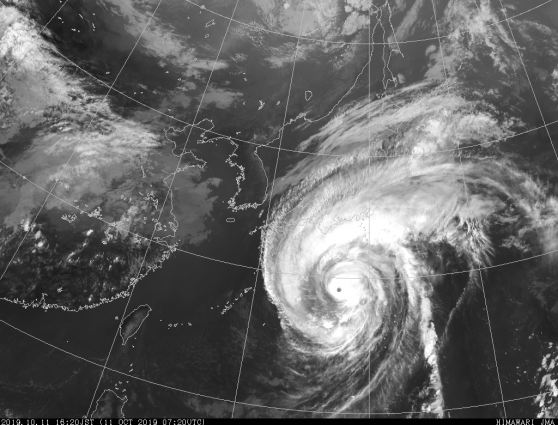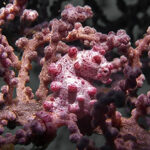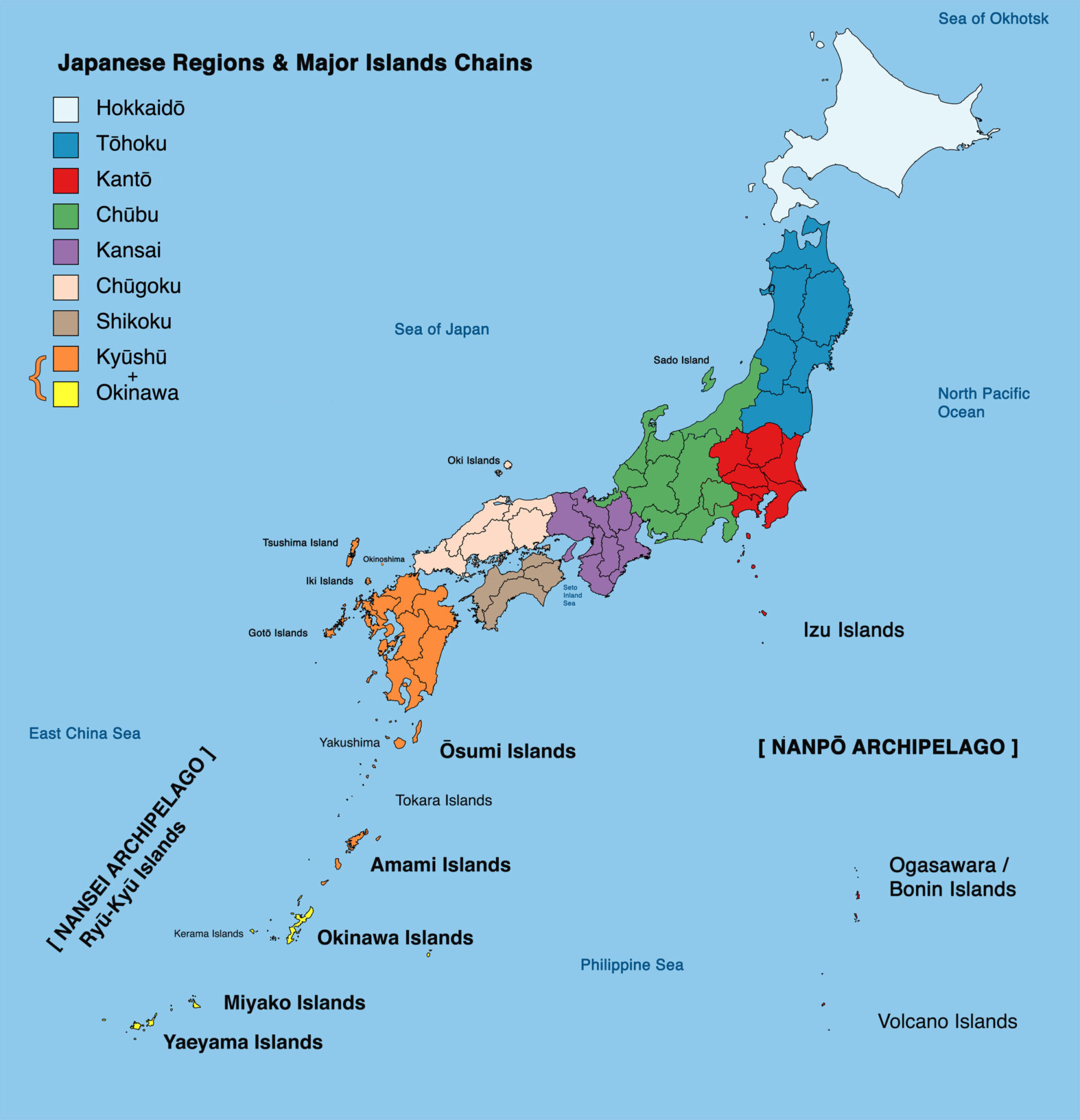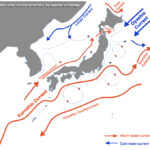Geography
Climate & Seasons
Overview
The Japanese archipelago is located in the temperate zone, and has therefore a predominantly temperate climate.
However, due to the country’s extreme latitude span, you’ll find great variations between northern to southern climatic conditions, which range from subarctic to the north of Hokkaidō island, to subtropical in the southern island chains (primarily the Nansei archipelago starting off south Kyūshū and the Nanpō archipelago, south of central Honshū).
Japan has four distinct seasons, but these are articulated within a complex climate system, not only because of the country’s length, but also because of the geographical disposition of the islands and their highly mountainous topography, which induces marked differences between the weather conditions of the west coast, facing the Sea of Japan and of east coast, which faces the Pacific Ocean.
Furthermore, the geographical position of the archipelago, at the edge of the Eurasian continent, means that Japanese weather is also directly influenced by continental weather phenomena, including the East Asian Monsoon cycle, as well as by powerful oceanic currents that flow the strongest along the Pacific-facing eastern coast, as well as between the west coast and the continent.
Japan is also affected by other climatic events such as cyclonic storms (typhoons)
The main seasons are winter (December through February), spring (March through May), summer (June through August), and autumn (September through November), along with a short rainy season which marking the transition from late spring to early summer.
A good summary of Japan’s climactic system can be found here.

Japan’s four seasons – Image source: japanexplorer.com
Japan’s average annual temperature is 15°C.
In winter, temperatures range from -9°C in the northern regions to 16°C in the south, but temperature of -20°C are not unheard of in the far-northern inland areas of Hokkaidō island.
In summer, the temperature range spans roughly 20°C in the north to 28°C in the south, but temperature peaks of 35°C or above are not uncommon in Western Japan and elsewhere.
The highest temperature ever measured in Japan was 41.1°C, first recorded on July 23, 2018.
Yearly rainfall averages 100 to 250 cm, and humidity is generally high, ranging from 50% to 75%.
The peak rainy season (Tsuyu, linked to the continent’s Eastern Monsoon) spans from May to October, with some major regional variations.
Climatic regions
North
Northern Japan (Hokkaidō and the north of Tōhoku on Honshū Island) has a humid continental climate, where cool (in the northern part of Hokkaidō) to warm summers alternate with long, harshly cold winters.
In regions bordering the Sea of Japan, i.e. the west-coast regions of north Honshū, as well as mountainous areas, the winter monsoon brings particularly heavy snowfall in the winter months. Snow covers the ground for almost four months.
These heavy snowfalls are due to colder dry air from the Siberian plains, which is swept south-easterly over the Sea of Japan, where it picks up moisture, before finally hitting the mountains of central Japan.
The causes the area’s characteristic heavy snowfalls, which have earned west-facing regions of northern Japan the nickname Yukiguni, “snow country”.
The west-coast region also sometimes experiences surprisingly hot temperatures in summer, linked to foehn like winds blowing down the central mountain ranges.
East
Eastern Japan (such as south of Tōhoku, Kantō and Chūbu regions on Honshū Island) have a typical inland humid continental climate, with large temperature differences between hot and humid summer month and cold winters winter months, again with heavy snowfalls in mountainous areas and on the Sea of Japan side of Honshū.
The Pacific coast, however, features a humid, subtropical climate that experiences milder winters with only occasional snowfall and mostly hot, humid summers, mostly because of the southeast seasonal winds.
Sandwiched between the Sea of Japan and the Pacific Coast, the mountain regions have a continental-type climate, with lower winter temperatures and high summer temperatures, and less overall humidity.

West
Western Japan regions (Kansai onwards) have very hot and humid summers (with temperatures sometimes reaching 35°C or above), and moderately cold winters.
The mountain ranges of Chūgoku and Shikoku shelter the Seto Inland Sea from seasonal winds, which brings rather mild weather year-round.
South
The southern archipelagos such as the Nansei / Ryū-Kyū islands (that stretches from south Kyūshū to Taiwan), as well as the remote islands of the Nanpō island chain (Izu Islands and Ogasawara/Bonin Islands) have a markedly subtropical oceanic climate, with hot and humid summers (temperatures rarely reaching 35° C or above) and mild to warm winters.
Precipitation is generally very heavy, especially during the rainy season.
Ecoregions of Japan
On land, Japan is considered to be home to nine forest ecoregions or ecozones, which reflect the country’s geography and humid climate, ranging from warm subtropical in the southern islands to cool temperate on the northern island of Hokkaidō.
The Japanese archipelago lies at the convergence of three terrestrial biogeographic realms, the Palearctic, Indomalaya, and Oceania, and the flora and fauna found across the islands combine elements from all three.
The 4 largest islands of Honshū, Hokkaidō, Kyūshū, and Shikoku, along with the nearby islands, are considered part of the Palearctic realm.
The island arcs of southern Japan, the Nansei archipelago to the southwest and the Ogasawara Islands at the southeast of the Nanpō archipelago, present subtropical moist broadleaf forest ecoregions.
The Nansei islands‘ subtropical evergreen forests ecoregion is attached to the Indomalayan realm, while the Ogasawara subtropical moist forests of the Ogasawara islands onwards are attached to the Oceanian realm.
Main marine ecoregions of Japan:
- Sea of Okhotsk (Cold Temperate Northwest Pacific)
- Oyashio Current (Cold Temperate Northwest Pacific)
- Northern Honshū (Cold Temperate Northwest Pacific)
- Sea of Japan (Cold Temperate Northwest Pacific)
- Central Kuroshio Current (Warm Temperate Northwest Pacific)
- East China Sea (Warm Temperate Northwest Pacific)
- South Kuroshio (South Kuroshio)
- Ryū-Kyū reefs (South Kuroshio)
- Ogasawara Islands / reefs (Tropical Northwestern Pacific)
See here for more info on Marine Ecoregions of the World

Sunrise on the northern Sea of Japan – Image source: wikipedia.org
Rainy season and cyclonic storms
Tsuyu : Japan's rainy season
In addition to the divide subarctic and subtropical conditions found north and south of the Japanese islands, the Japanese archipelago is also affected by the annual cycle of East Asian Monsoon also active in most of east, southeast and south Asia.
The East Asian Monsoon cycle is an imbricated weather system connecting the Western Pacific and the East China Sea to the Asian continent’s landmass.
Its monsoonal flow shift results, in mainland China, Taiwan, Korea and Japan, in a short but intense rainy season, also called the East Asian Rainy Season, which generally marks the transition between spring and summer.
Monsoon Systems – Image source: miamioh.edu
The East Asian monsoon is a so-called “sea breeze monsoon”, which the most common type, forming because land and sea heat up at different rates, so warm maritime air mass forms a high pressure front over the sea, while there is colder, low pressure front over land.
The continental spring/summer monsoon induces a rainy season in Japan, whereas the winter monsoon cycle is partly responsible for the heavy snowfalls
The Japanese branch of the East Asian Monsoon induced rainy season, called Tsuyu in Japan (梅雨 tsuyu, lit. “plum rain”, from the historical Chinese belief that moisture evaporating from ripe plums falling in this season is making it rain).
The Japanese rainy season, with its downpours and overcast days normally lasts from early June to the middle to end of July in the most of the country, first reaching the Nansei/Ryū-Kyū islands in early May, and then gradually moving north across the country (this movement is called the “ rainy season front” 梅雨前線 baiu zensen)
Regionally, it spans from mid-May to mid-June in the Nansei / Ryū-Kyū Islands, and from early June to early July in Honshū, whereas the island of Hokkaidō is mostly unaffected.
During rainy season, rain may continue pouring continuously over a period of several days, and floods are quite common, especially in the valleys and Pacific coastal areas, which is why large embankments and dikes have been erected in most elevated rivers.
The end of the rainy season (normally at end of July in the most of the country) leads to a sudden sharp decrease in rainfall and sunnier condition.

Rainy Season – Image source: jrailpass.com
Typhoons : cyclonic storms
However, in the hotter late-summer months and in early autumn, warm air highly charged in humidity generates gigantic tropical storms in the North-western Pacific Basin.
These violent cyclonic storms from the Pacific are called typhoons (literally “great winds”), and head north-west, passing over the Japanese archipelago, and bringing often violent, heavy rains, before striking the Asian continental mainland.
Typhoons in the Pacific Ocean intensify and sometimes pass near Japan from July to October.
Statistics show that typhoons move onshore the most between August and September.
Typhoons following a more parabolic, recurving path are the most common ones directly affecting Japan, especially the Nansei Islands (Ryū-Kyū) in the East-China Sea and Nanpō Islands in the Philippine Sea.
The southern part of Shikoku island is also particularly vulnerable to typhoons, which can also hit, somewhat less-frequently Honshū’s Pacific coast and Western Japan.
Typhoons disrupt transports, and the violence of some storms can cause destruction, because of the winds, and also through flash-floods caused by fresh torrents of water to the rivers.

Typhoon – Image source: World Meteorological Organisation

Summer & autumn typhoons
Image source: weathernews.jp
Typhoon directions – general trends between July and October – Image source: weathernews.jp
The severity of typhoons varies greatly; as do the paths they follow, which is closely monitored.
If a powerful typhoon is due to make direct landfall, transportation and activities come to a halt, and safety measures can include lockdowns and even evacuations (especially on small islands).
The area is usually brought to a standstill for 2 to 3 days, and, if the typhoon was particularly destructive, electricity, water and food supplies can be affect in the aftermath.
However, they are such a common occurrence in some areas that the local communities deal with them very efficiently.
At the height of typhoons season, places like the Okinawa islands can face a typhoon every two weeks or so, and the “wet season” is therefore considered to last from rainy season is from May to October in the southern Ryū-Kyū.

Typhoon in Okinawa – Image source: ielove.co.jp
Japanese Seasons at a Glance
Winter Season
(December-January-February)
Weather of the winter months (December-January-February) is influenced by the high-pressure front (the Siberian High) that develops over the Siberian plains of Eurasian Continent, in conjunction with a low-pressure front over the northern North Pacific (Aleutian Low).
Winds blowing cold air from Siberia to Japan and bring heavy snowfall to Japan’s Sea of Japan side and mountains, as well as generally sunny conditions to its Pacific side.
Winter, temperatures range from -9°C in the northern regions, with the lowest temperatures (-20°C) found in the far-northern inland areas of Hokkaidō.
In the southern regions, the subtropical island chains (Nansei and Nanpō chains), especially the southern Ryū-Kyū, have very mild winters due to their subtropical location, the average temperatures reaches up 16°C
This is the diving low season, with generally rougher conditions and colder water temperatures, though many Japanese divers dive all year round, mostly in dry-suits.

Spring
(March-April-May)
In the spring months (March-April-May), the situation is often a little unstable as migratory cyclonic and anticyclonic pressure system alternate across the country.
Air and water temperatures rise gradually, and the second half of spring generally sees sunshine as anticyclonic systems prevail.
Rainy Season
(Late May - June - July): late spring, early summer
Late spring, however, sees the development of the Japanese branch of the East Asian Rainy Season, (called Tsuyu in Japan), which is the result of predictable flow shifts (southeasterly winds) of the East Asian Monsoon.
The rainy season normally lasts from late spring to early summer, peaking roughly from early June to the middle / end of July in the most of the country.
It first begins in early May in the Nansei/Ryū-Kyū islands, where it lasts until mid-June.
The rainy front moving north gradually across the country, usually reaching Honshū in early June, where it lasts until early July.
Summer
(June-July-August)
In summer, the temperature range spans roughly from 20°C in the northern regions to 28°C in the south, but temperature peaks of 35° C or above are not uncommon.
Early summer is characterised by the rainy season, until the North Pacific High anticyclone extends north-westward around Japan, which brings a sudden sharp decrease in rainfall, and generally hot and sunny conditions across the country.
The second half of summer sees the highest temperatures across the country, especially in Western and Central Japan.
The Pacific side of northern and eastern Japan sometimes faces cloudy and rainy conditions, linked to cooler easterly winds high in humidity (known as Yamase) caused by a high-pressure system that forms over the Sea of Okhotsk.

Typhoon season
(July to October, peak in August-September)
The first cyclonic storms (typhoons), forming in the Pacific Ocean, can start affecting the Nansei island as early as May, but their frequency radically increases between the summer to autumn months, generally peaking in the August-September, and diminishing in frequency in October.
Originating in the North-western Pacific Basin, they most commonly make landfall in the Nansei Islands, Nanpō Islands and somewhat less-frequently, along Honshū’s Pacific coast and in Western Japan.

Autumn
(September-October-November)
Temperatures begin falling gradually in September month, which also see a slight increase in rainfall, due to frequent typhoons, and the constitution of an autumnal rain front.
October usually sees more sunny days and refreshing conditions across the country, due to the frequent passage of anticyclonic pressure systems.
These give way to colder north-westerly winds and an increase in rainfall, and also first snow in the Sea of Japan side of the country, and higher altitudes.
As in many other place around the globe, the Japanese archipelago as recently recorded more climatic changes, including alterations of traditional weather patterns, heavier rainfall and increasing temperatures, which, according to the Ministry of the Environment, have caused problems in the agricultural and fishing industries and elsewhere.
The highest temperature ever measured in Japan, 41.1°C was recorded on July 23, 2018, and this record high was repeated on August 17, 2020…










